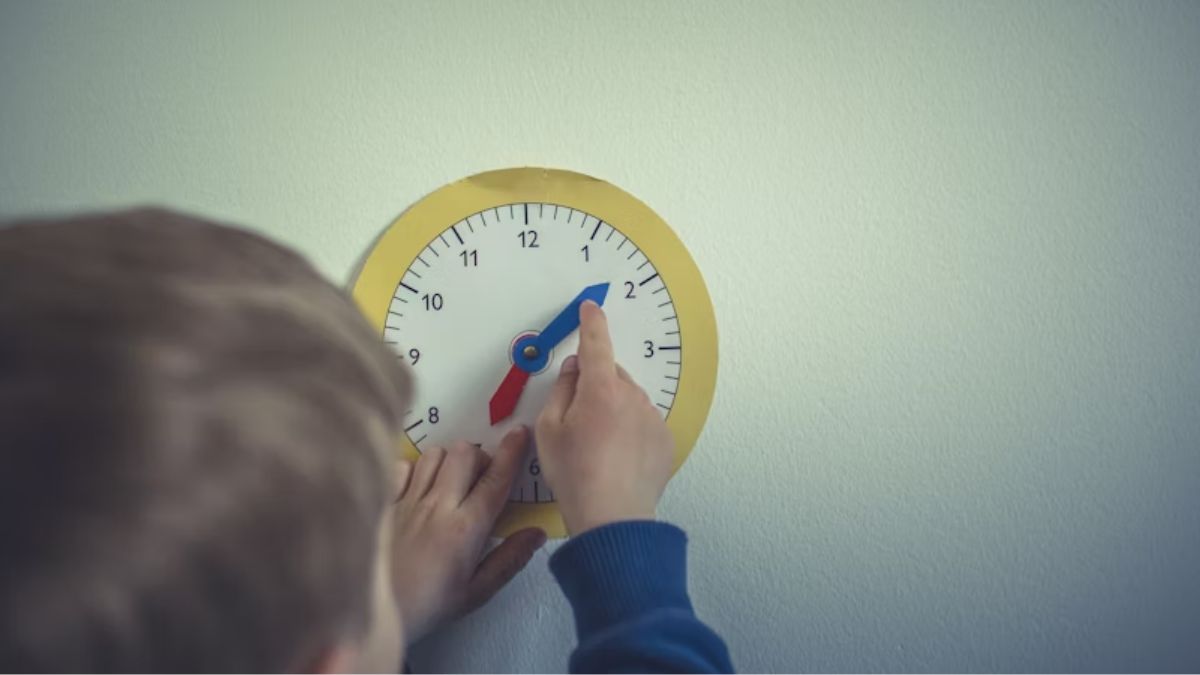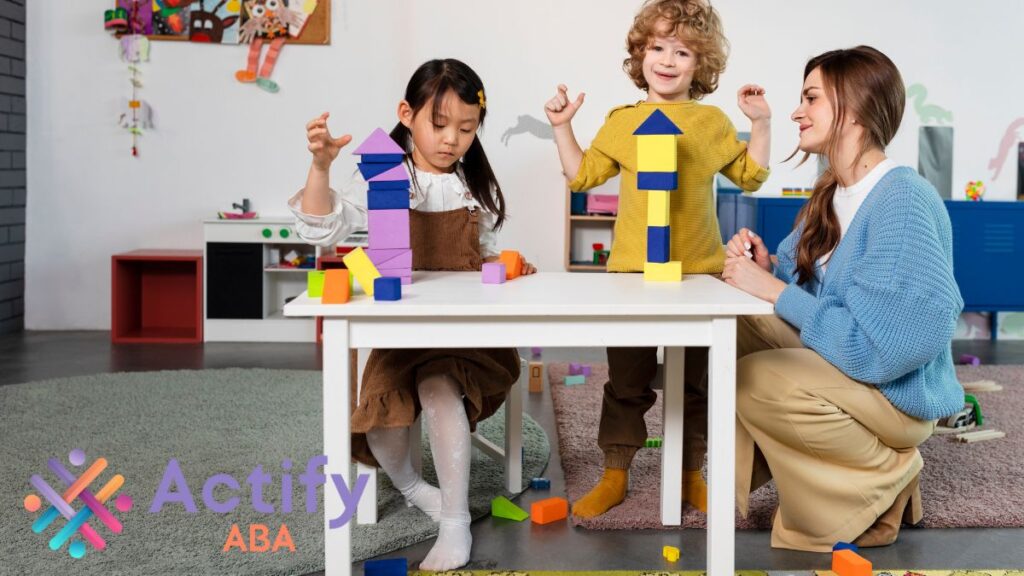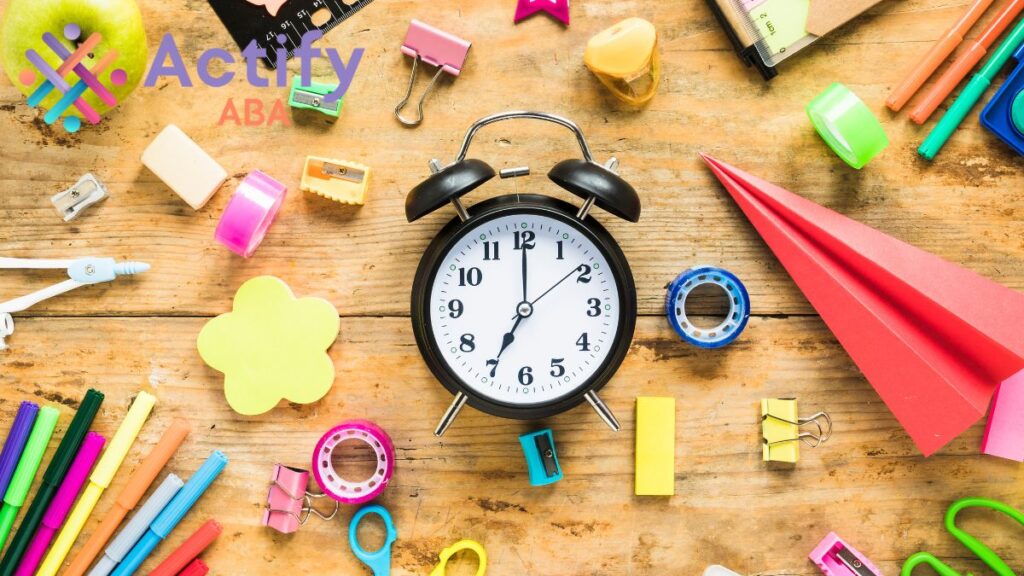
Key Points:
- Each child’s ABA therapy plan is different. The hours depend on age, needs, or learning speed. There’s no single schedule that fits all.
- Steady yet flexible sessions help children build better communication and behavior skills.
- When parents stay involved at home, therapy becomes part of everyday life.
If you’ve ever wondered, “How many hours of ABA therapy is needed for my child? ” You’re not alone. Parents ask this question the moment they start exploring autism support options.
The short answer? It depends. Every child on the spectrum is different. What works beautifully for one may not fit another at all. Understanding the factors behind therapy hours helps you make the right choice for your child, and for your peace of mind.
Let’s take this step by step.
What Is ABA Therapy, Exactly?
Applied Behavior Analysis, or ABA, is a structured way of teaching life skills through small, repeatable steps. Each lesson builds confidence and independence.
Therapists use positive reinforcement to strengthen communication, social skills, and emotional control. It’s not about changing who a child is—it’s about helping them reach their potential in their own way.
So, how do therapy hours come into play? Let’s find out.
Why Therapy Hours Matter

Think of learning a new language. If you practiced once a week, progress would crawl. ABA works the same way—consistency creates success.
Therapy hours determine how often your child gets to learn, repeat, and apply new skills in real life. The more structured and steady the sessions, the stronger the results. But before we talk numbers, let’s look at the two main types of programs.
Two Main Types of ABA Programs
ABA programs usually fall into two groups: focused and comprehensive. The difference lies in how many hours your child spends in therapy each week and the range of goals covered.
| Program Type | Average Weekly Hours | Best For | Goals |
| Focused ABA | 10–25 hours | Older children or those with mild to moderate needs | Targets specific skills such as social play, communication, or self-help. |
| Comprehensive ABA | 30–40 hours | Younger children or those with moderate to severe needs | Builds broad skills like communication, play, daily living, and behavior regulation. |
These numbers aren’t set in stone. They’re flexible guidelines that adapt to your child’s pace, energy, and schedule.
How Age Impacts ABA Therapy Hours

Age plays a major role in deciding how many hours of ABA therapy is needed. Let’s break it down by stage:
Toddlers (18 months–3 years): Early intervention often ranges from 25 to 40 hours per week, focusing on language, imitation, and play.
Preschoolers (4–6 years): Around 20–35 hours weekly, depending on progress and readiness for group interaction.
School-aged children (7–12 years): 10–25 hours weekly, focusing on academics, behavior, and emotional skills.
Teens (13+): 5–20 hours weekly, building independence and preparing for real-world situations.
Why the range? Children’s needs evolve with age. Younger kids benefit from more intensive early support, which can lead to stronger long-term outcomes.
The Role of Individual Assessment
There’s no universal formula for determining therapy hours. Each child’s plan starts with a behavioral assessment conducted by a Board Certified Behavior Analyst (BCBA).
This evaluation considers:
- Current skill level
- Developmental history
- Social and communication strengths
- Daily routines and challenges
- Family goals
After reviewing these areas, the BCBA designs a personalized roadmap that evolves as your child progresses. So if your child is prescribed 20 hours instead of 35, it’s not “less treatment.” It’s a schedule matched to their unique capacity and rhythm.
What Research Says About Therapy Hours
Studies show that early, consistent ABA—typically 25–40 hours weekly—can boost communication, learning, and daily living skills.
A 2020 study in the Journal of Autism and Developmental Disorders found that children who received steady ABA therapy for at least a year showed noticeable improvements in language and social interaction.
Still, “more” doesn’t always mean “better.” What matters most is quality and consistency, not just total time. Short, engaging sessions often achieve more than long, unfocused ones. Balance truly matters.
How Long Does ABA Therapy Last?
ABA isn’t a one-week solution—it’s a learning journey that evolves with your child. Some programs last several months, while others extend for a few years. Over time, the structure usually lightens as skills build.
A typical timeline looks like this:
- Initial Phase (0–6 months): Build trust and establish basic learning routines.
- Growth Phase (6–18 months): Strengthen communication, social play, and independence.
- Maintenance Phase (18+ months): Reinforce progress, introduce new goals, and prepare for transitions.
Progress naturally unfolds in stages. The goal isn’t to rush but to nurture steady, lasting development.
Signs Your Child May Need More (or Fewer) Hours
How do you know if your child’s current schedule fits? Watch for clues in their daily behavior.
You might need more hours if:
- Skills don’t transfer at home or school.
- Problem behaviors increase.
- Communication remains limited.
You might need fewer hours if:
- Goals are consistently met.
- Your child uses new skills naturally.
- They seem tired, bored, or overwhelmed.
If you notice changes, talk to your BCBA. Therapy should help your child grow—not exhaust them.
What a Typical ABA Week Looks Like
Every schedule is different, but here’s a sample of what a balanced ABA week might look like:
| Day | Focus Area | Duration |
| Monday | Communication and imitation games | 3 hours |
| Tuesday | Daily living and transitions | 4 hours |
| Wednesday | Social play and peer practice | 3 hours |
| Thursday | Sensory activities and coping skills | 4 hours |
| Friday | Review and reinforcement | 2 hours |
That’s about 16 hours a week, great for a focused program. Comprehensive plans may double that time, often mixing home, school, and center-based sessions.
Overcoming Concerns About Intensive ABA Therapy
Even when therapy works well, it’s natural to have concerns about intensity. After all, 30–40 hours per week sounds like a lot! The key is keeping things balanced, positive, and sustainable.
Watch for Signs of Burnout
Children can feel drained if the schedule is too demanding. Watch for:
- Irritability or loss of interest in play
- Trouble sleeping
- Emotional ups and downs
If these appear, it’s okay to pause or adjust. Comfort and emotional health come first.
Keep Therapy and Family Life in Sync
Therapy shouldn’t take over family time. Leave space for rest, hobbies, and fun. Everyday activities like cooking, walks, or games can help kids practice what they learn in real life.
Personalize Every Step
No two children learn the same way. Customizing each session keeps therapy engaging instead of tiring. It also encourages confidence and self-esteem.
Include the Whole Family
ABA works best when everyone participates. Your routines, communication style, and encouragement shape how your child learns. The more natural therapy feels in daily life, the more progress you’ll see.
Stay Flexible
Schedules should bend, not break. A flexible plan allows families to adjust without losing momentum. Small changes—like reducing one session per week—can make a big difference in keeping motivation high.
The goal is simple: effective therapy that supports both growth and joy.
The Family’s Role in ABA Success
Here’s something many parents miss—ABA doesn’t end when sessions do. What happens at home matters just as much.
When parents use the same strategies therapists teach, children improve faster. Celebrating small wins, staying calm during challenges, and modeling communication all reinforce progress.
Your consistency turns therapy from lessons into lifelong skills.
How to Know You’re on the Right Track
You’ll start seeing signs of progress, even in subtle ways.
You’ll know therapy is working when:
- Your child communicates more clearly.
- Daily routines feel smoother.
- Problem behaviors decrease.
- Curiosity and joy begin to shine through.
Progress may be gradual, but every step counts. Celebrate each milestone—big or small.
Common Myths About ABA Therapy Hours
Let’s clear up a few common misunderstandings about therapy time.
Myth 1: More hours always mean faster results.
Reality: Quality and structure matter more than time spent.
Myth 2: My child will get tired of too many sessions.
Reality: ABA sessions are interactive and playful. Therapists adjust pacing to match energy levels.
Myth 3: Once therapy ends, progress stops.
Reality: ABA builds lifelong tools. Even after sessions end, skills continue to grow through daily life.
FAQs: ABA Therapy Hours Explained
1. How many hours of ABA therapy do most children receive per week?
Most children receive between 10 and 40 hours weekly, depending on age, assessment results, and learning goals.
2. Does all therapy have to happen in a center?
No. ABA can take place at home, in school, or out in the community. Many families mix environments for better real-world practice.
3. Can ABA hours change over time?
Yes. As your child improves, your BCBA may adjust hours, focus areas, or session structure.
4. What happens if we miss sessions?
Life happens! Missing a few won’t stop progress. Just let your therapy team know so they can help you catch up.
5. How do I know if it’s time to reduce hours?
If your child meets goals consistently, applies skills independently, and handles transitions smoothly, your BCBA may suggest a lighter schedule.
Creating a Happier Path for Your Child’s ABA Journey

So, how many hours of ABA therapy is needed? The real answer depends on your child, and that’s where Actify ABA can help. Their team understands that every child learns at a different pace, which is why they tailor programs to match your family’s needs. If you’re ready to explore what the right balance looks like, reach out to Actify ABA today and start building a plan that supports steady, joyful progress.
It’s all about finding harmony between therapy intensity, your child’s natural rhythm, and your family life. When therapy feels like growth, not pressure, progress follows naturally. Each session, each skill, and each small victory brings your child closer to confidence and independence. Families across Maryland have seen how personalized ABA can make a lasting difference. Because in the end, success isn’t measured in hours, it’s in every moment your child learns, grows, and shines a little brighter.
